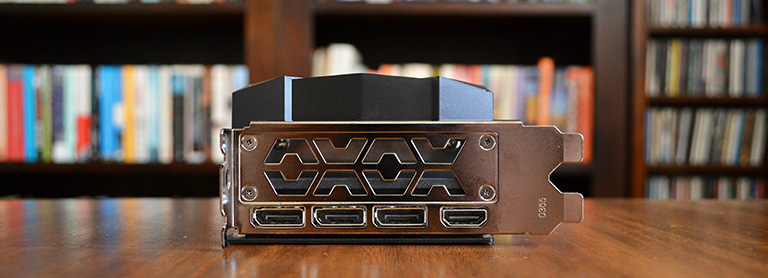Introduction
The GeForce RTX 3080 graphics card is a great performer at its purported $699/£649 price point. We say purported because finding any in stock is proving difficult and frustrating in equal measure.
Even so, that doesn't mean Nvidia's partners aren't keen on pushing the 30-series cards as hard as they can. Any news and coverage is good, especially when the cards routinely top the performance charts.
KFA2, a subsidiary of Galax, eagerly jumps on the Ampere bandwagon by releasing a trio of RTX 3080 cards, including one in pink, though we have the base SG model in for review.
The card is inevitably big, measuring 317mm long, 113mm high and 61mm thick, putting it firmly in three-slot territory. That's no problem as without the ability to run SLI - only RTX 3090 can do this - having only a single card in the system leaves plenty of room in a mid-sized chassis. Weighing in at 1,360g is about par for the RTX 3080 course, too.
Unlike competitor cards, KFA2 doesn't go for an oversized heatsink - it's the same height as the rear bracket - and fitting three 92mm fans leaves little wiggle room up top. The trio switches off at low loads, but annoyingly, they sometimes whir into action if doing something as simple as playing a video, even though the temperature is below the assumed switch-on level.
Most AICs have gone down the route of having the PCB finish two-thirds of the way down the card. The remaining area is used for the extended heatsink with the fan pushing air through it and the backplate cut-out and out to the CPU area. Nothing new there.
KFA2 takes this through-the-card cooling a step further by having a bundled clip-on fan driving more airflow in this area. Installing it means the card has to be positioned in the lower x16 slot because the '1-clip Booster' interferes with the memory modules when in the regular slot. Adding it also precludes the use of a bundled support bracket.
There's no second BIOS on this card. Boost frequency chimes in at 1,710MHz, or the same as the Founders Edition card. KFA2 provides a modicum of overclocking by a one-click OC through Xtreme Tuner Plus software, helping push the core to 1,725MHz. Such a move is of negligible real-world benefit as the observed boost speed increases by 5-10MHz, or not enough to make a single fps difference at 4K. GDDR6X memory is left at a default 19Gbps.
As usual, a partner RTX 3080 is all about heatpipes, heatsinks and enhanced power circuitry. Underneath, seven heatpipes exit the base in contact with the GPU. Two go back into the aluminium fins on this side while a further five run the left-hand fin-stack, as you look at the above picture. This heatsink is shaped such that it sits on top of the power phases and actual contact is made by thermal pads. Closer examination shows KFA2 covers the memory chips with the same pads and a separate heatsink, connected to the I/O bracket, fully covers other hot-running components.
Power is sourced through a couple of eight-pin connectors and RGB is provided in two areas. The first is behind the 'What's Your Game' phrasing on this side; the second dotted behind the three fans. The lighting is clear and bright yet introduces hotspots behind the fans. RGB effects can be synchronised with the system by using a bundled cable and connecting it from the motherboard to the five-pin header on the front of the card.
The backplate, meanwhile, is more for rigidity and aesthetics. It doesn't cool anything of note as the memory chips on an RTX 3080 are all contained on the top side.
RTX 3080 SG's open nature leads to a number of different-coloured connectors on show if mounted in the usual horizontal manner. They're not an eyesore, per se, but we'd recommend keeping consistency by going for all-black fan-headers and cabling. Having fan cables straddle the side of the heatsink isn't too pretty, either.
Some partners opt to go for five outputs by adding a second HDMI 2.1. KFA2 doesn't go down this route as only four can be used at one time and VR, which is the primary reason for dual HDMI, has fallen by the wayside.
It's disappointing to see the card is only backed by a two-year warranty when the competition provides three or four years. And whilst stock is in constraint, we can only draw value conclusions by looking at the pre-order price, which is £720 for this model, or £70 more than the arguably better-looking Founders Edition card.







